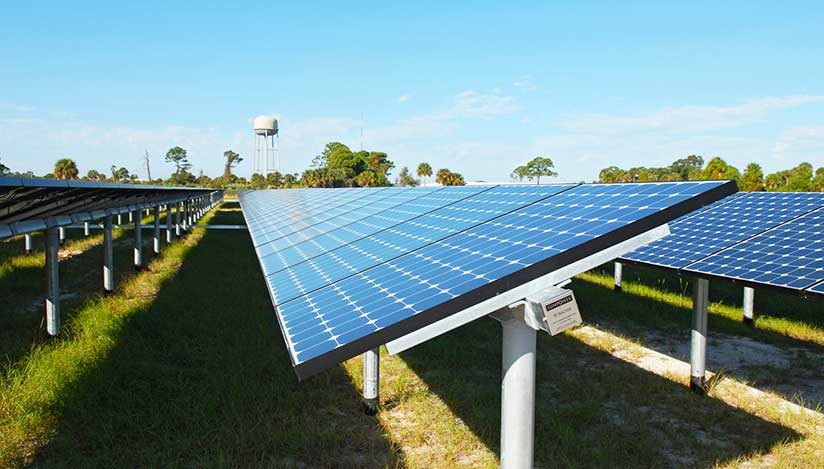Electricity from Solar Power is Getting Cheaper, Despite Recent Tariffs
Back in January of 2018, the United States imposed import taxes of up to 30% on solar energy equipment imported into the country. Many feared that the tariffs would put the brakes on the explosive growth of solar power in the US.
Unfortunately, the industry did experience setbacks. The Solar Energy Industries Association estimated that a total of 23,000 jobs would be lost due to layoffs by panel manufacturers, as well as installers and sellers. It’s currently estimated that 260,000 Americans are employed by the industry.
But despite these cost hikes, new solar installation projects have continued at a breakneck pace.
In the first three months of 2018, develops installed solar power systems with a total generating capacity of 2.5 gigawatts. This figure represented 55% of the total capacity of all new power projects, dwarfing natural gas- and wind-based projects.
Experts anticipate that the pace of new installations will slow, and that the rate of new installations will be flat, year-over-year, at approximately 11 gigawatts. For perspective, based on the California Independent System’s (ISO) estimate that 1 megawatt can power 750 homes simultaneously, 2018’s new solar installations will be sufficient to power 8.25 million homes.
The rate of installations is expected to grow in the near future, reaching 14 gigawatts per year by 2023.
At the same time, the anticipated cost of electricity produced from solar power is dropping precipitously.
Before ground is broken on new large-scale energy projects, developers ensure that there will be demand for the electricity produced in the future by soliciting bids for a power purchase agreement (PPA).
In a PPA, a company or organization agrees to buy a set amount of electricity for a contracted period of time, at a negotiated rate. This allows organizations to take advantage of solar power, without having to come up with a large-sum investment ahead of time.
By looking at the PPAs negotiated for projects still in development, we can get a sense of what energy prices will look like in the future. And right now, it looks like electricity produced via solar power is going to be cheap.
Earlier this year, Nevada Power, a utility company owned by mega-investor Warren Buffett’s holding company Berkshire Hathaway, signed PPAs for six new solar farms. These new farms will have a total production of over 1 GW. In these agreements, Nevada Power has agreed to buy the energy produced by these farms for 25 years. For one solar farm, Nevada Power secured a rate of only $21.55 per megawatt-hour, or just over 2 cents per kWh. But this rate will be adjusted to account for inflation at a rate of 2.5% per year, maxing out at $29.24 per MWh (2.9 cents/kWh).
The truly jaw-dropping deal was one in which Nevada Power will buy power at a flat rate of $23.76 per MWh, or just under 2.4 cents per kWh. But with the price remaining fixed despite inflation, it’s anticipated that this will equate to a current energy price of about $17.95/MWh (1.8 cents/kWh).
Current projections suggest that solar power will be by far the cheapest source of electricity in the United States in the near future.
For comparison’s sake, the U.S. Energy Information Administration anticipates that the levelized cost of electricity (LCOE)—the true cost of energy before factoring in subsidies—for common energy sources in 2022 will be (per kilowatt-hour):
- Coal: 11.91 – 13.01 cents
- Natural Gas (Combined-Cycle): 4.9 – 5.01 cents
- Natural Gas (Combustion Turbine): 8.51 – 9.87 cents
- Nuclear: 9.26 cents
- Wind (Onshore): 5.91 cents
- Hydroelectric: 6.17 cents
- Geothermal: 4.46 cents
- Biomass: 9.53 cents
All of these figures are significantly more expensive than the PPA rates being signed by Nevada Power and other energy companies. However, it should be pointed out that the EIA currently estimated that the LCOE of solar power in 2022 will be 6.32 cents per kWh. So, there is certainly some disagreement as to what the energy industry will look like in a few years’ time. But it’s safe to say that businesses are still extremely optimistic about solar power rates continuing to fall dramatically, which would greatly incentivize increased adoption and manufacturing.
And with California mandating the installation of solar power panels in most new homes, starting in 2020, we anticipate that residential adoption will continue to be strong. This will help to keep the price of solar power systems under control.
In short, the future of solar power is bright, and there’s no better time to take advantage of the savings offered by solar power. To learn whether a residential solar power system is right for you, contact Capital City Solar by calling 916-782-3333, or send us a message using our contact form.

